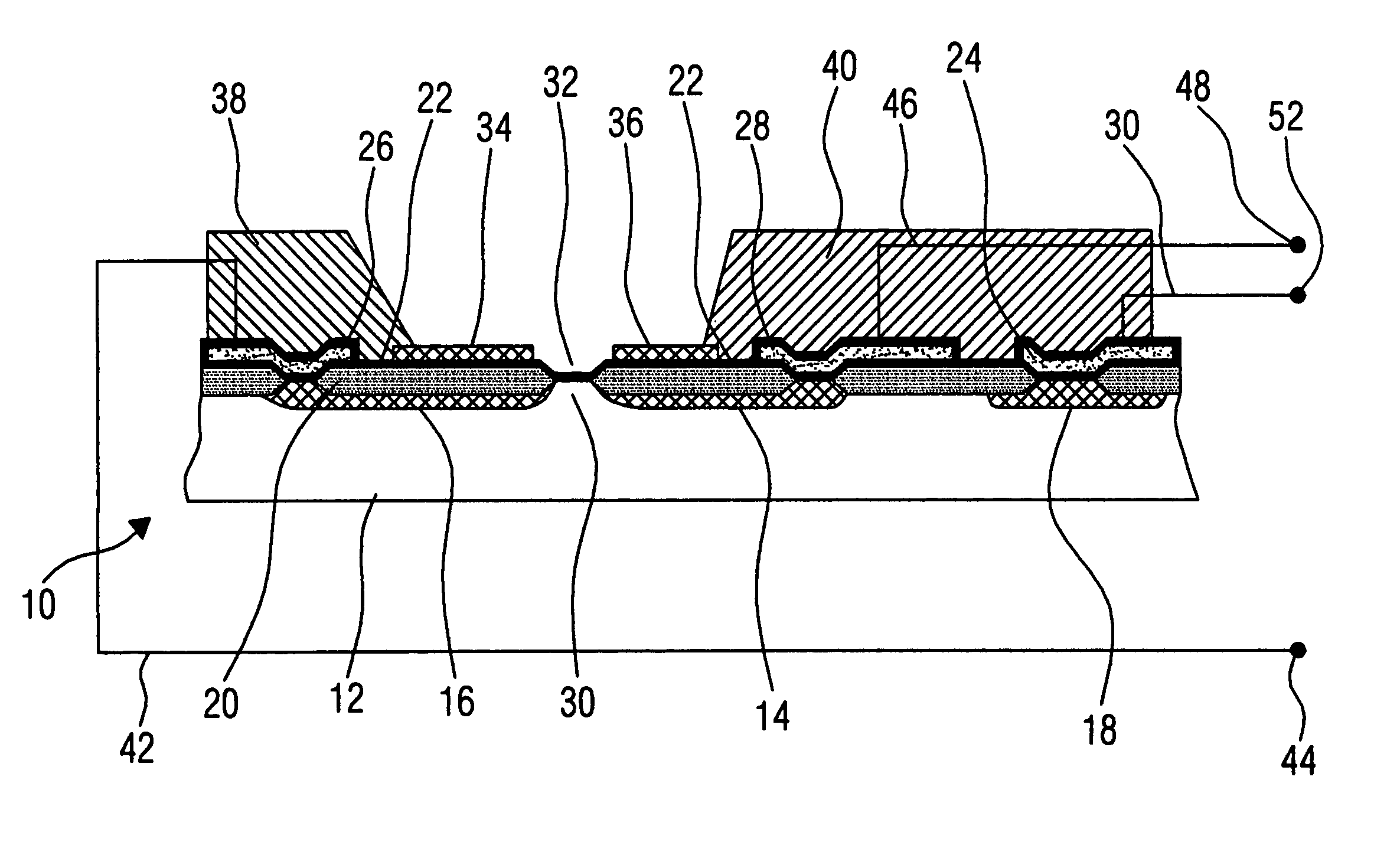Ion-sensitive field effect transistor and method for producing an ion-sensitive field effect transistor
a field effect transistor and ion-sensitive technology, applied in the field of field effect transistors, can solve the problems of releasing sharp-edged glass splinters, unable to efficiently miniaturize glass electrodes, and susceptible to environmental disturbances, and achieves high chemical stability, high chemical stability, and quick response
- Summary
- Abstract
- Description
- Claims
- Application Information
AI Technical Summary
Benefits of technology
Problems solved by technology
Method used
Image
Examples
Embodiment Construction
[0041]FIG. 1 shows a cross-sectional illustration of an ion-sensitive field effect transistor (ISFET) 10. The ion-sensitive field effect transistor 10 includes a semiconductor substrate 12, e.g. a silicon substrate. In the substrate 12, there are formed a source region 14 and a drain region 16. The substrate further comprises a substrate terminal region 18. The substrate may be a combination of a carrier substrate and an epitaxy layer deposited thereon, in which there are formed the active regions of the device. A field oxide layer 20 is formed on a surface of the substrate 12. A further isolating layer 22 extends on the field oxide layer 20.
[0042]The field effect transistor 10 further includes a terminal contact 24 which extends through the field oxide layer 20 and the isolating layer 22 and is connected to the substrate terminal region 18. Further, the field effect transistor 10 includes a drain contact 26 that extends through the field oxide layer 20 and the isolating layer 22 an...
PUM
| Property | Measurement | Unit |
|---|---|---|
| temperatures | aaaaa | aaaaa |
| structure | aaaaa | aaaaa |
| ionic concentrations | aaaaa | aaaaa |
Abstract
Description
Claims
Application Information
 Login to View More
Login to View More - R&D
- Intellectual Property
- Life Sciences
- Materials
- Tech Scout
- Unparalleled Data Quality
- Higher Quality Content
- 60% Fewer Hallucinations
Browse by: Latest US Patents, China's latest patents, Technical Efficacy Thesaurus, Application Domain, Technology Topic, Popular Technical Reports.
© 2025 PatSnap. All rights reserved.Legal|Privacy policy|Modern Slavery Act Transparency Statement|Sitemap|About US| Contact US: help@patsnap.com


